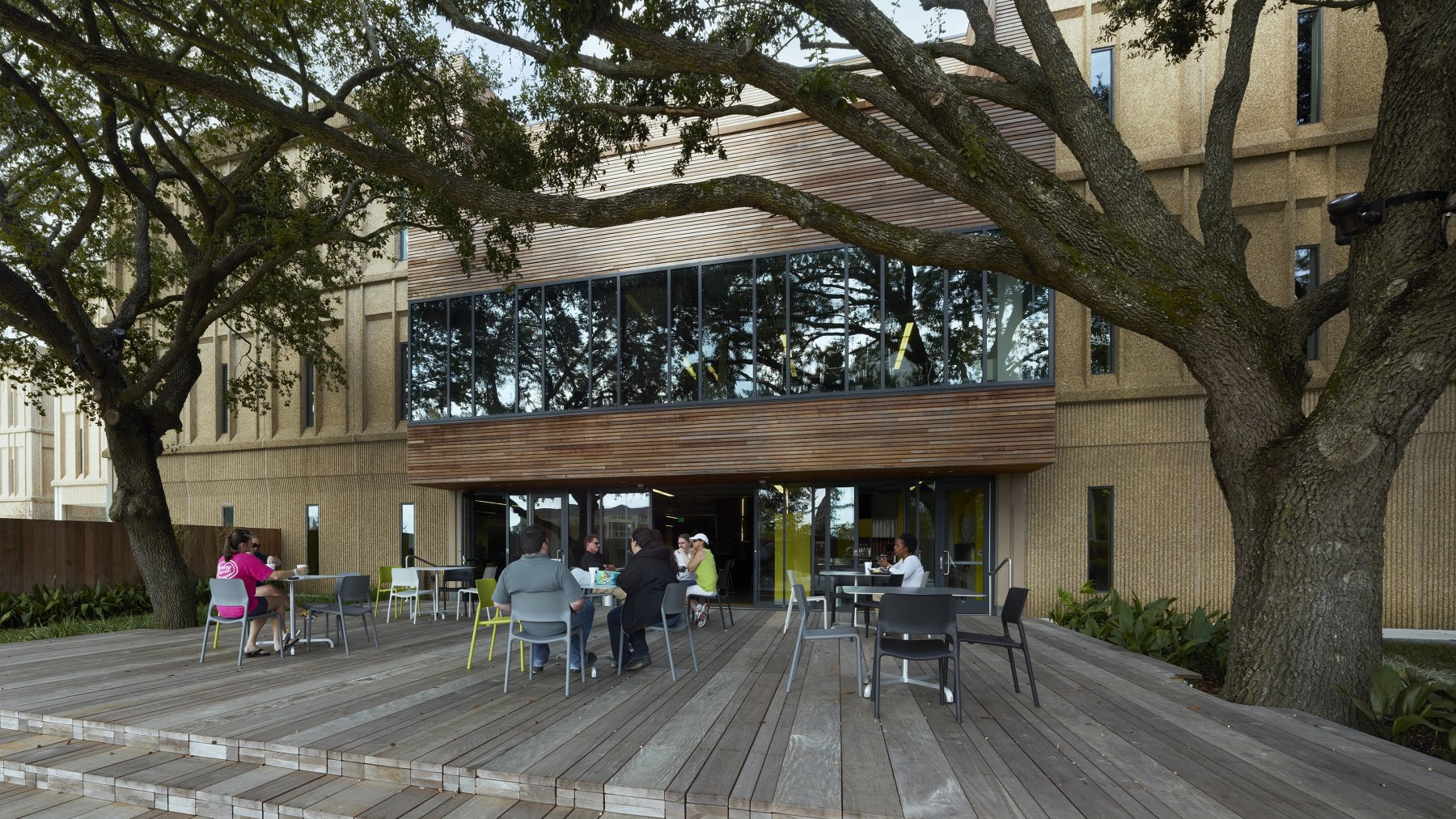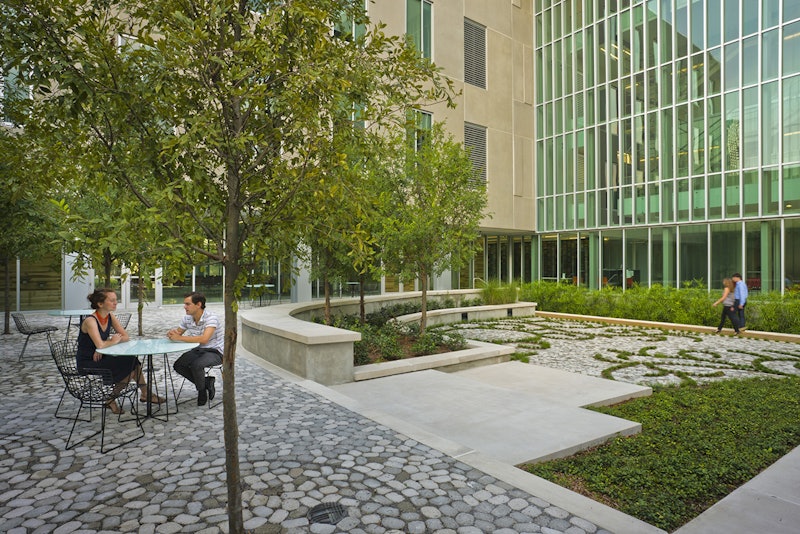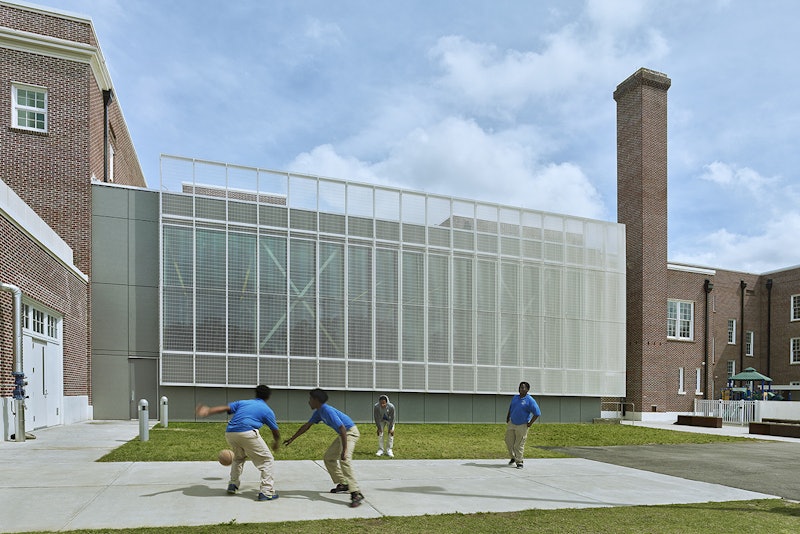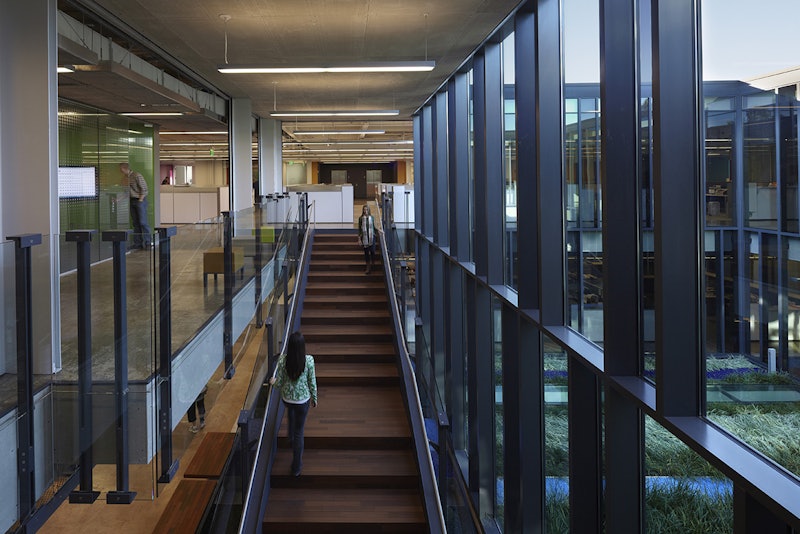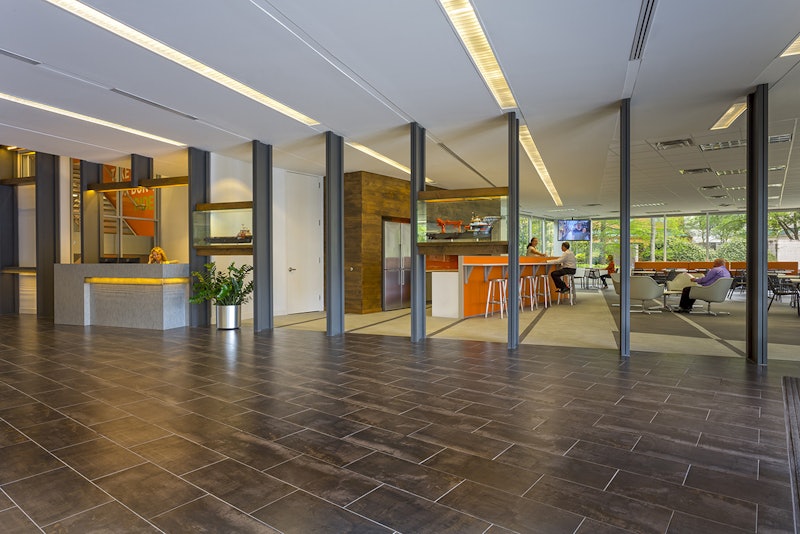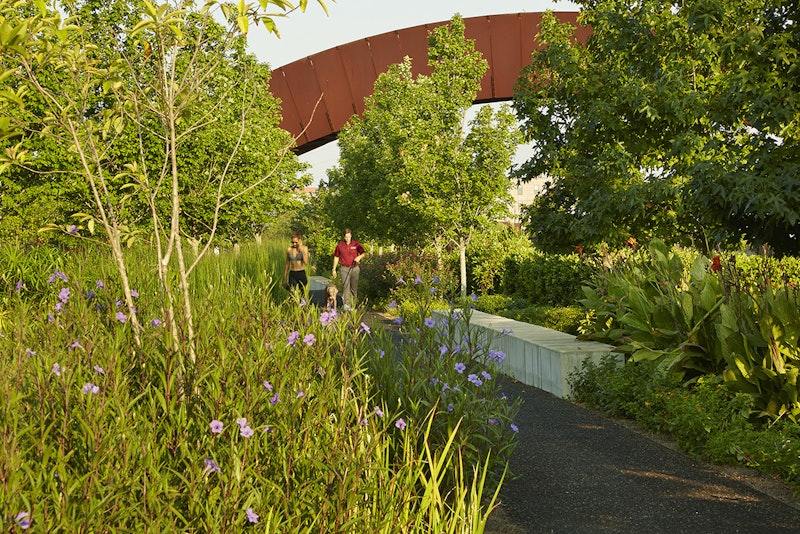
Health in the Built Environment
While it is easy to believe that design choices can positively and negatively affect health, what’s the hard evidence that these choices make a measurable difference? The focus of the 2015/2016 Fellowship was to conduct applied research in the field of health—informing design and materials choices to promote the health of those who live and work in buildings and communities.

This figure demonstrates the ways that the built environment may impact health from the material scale all the way to the urban scale.
Drawing from the ideas, themes, and practices developed in previous research fellowship years, the firm’s advancement of health through design took the forefront in this year’s fellowship. Post-occupancy surveys introduced by the Sustainability Fellowship became a means to understand walkability. The Day of Service (Community Engagement fellowship) connected the firm to local organizations with community-oriented missions. Strategies promoting resilience that connect people and create social capital served to augment this community wellness aspect. With health as a fourth lens through which to view our projects, paired with the previous frameworks, we sought to share lessons and case studies that would make positive health impact possible.
This year's Fellowship established the connections between the design of the built environment and human health. Promoting human health is not the exclusive domain of doctors. Individual choices matter most, but the environment can either nudge people to make better ones or enable poor ones. Designers have an important role.
Through research and recent strategies, our consciousness of the health impact of great design has grown, and in response, our definition of great design has likewise evolved. As a firm working at multiple scales and consistently interested in the public good, we consider the following five health themes as they span the scales of materials, buildings and the city.
Connecting People
At the urban scale, all public spaces from the streets to the libraries become opportunities for social interactions. These interpersonal connections ultimately support the health of the community through safety, social capital, and trust.
Increasing Activity Levels
That movement and exercise maintain health has been well-established, but recent studies go further, showing how the smallest changes in behavior can improve health and tying movement to improved mental health and cognition.
Providing a Healthy Indoors
The indoor, man-made environment has become our primary habitat. With indoor pollution levels up to five times higher than outdoors, many questions have been raised about the health repercussions. When it comes to what’s in building materials, much remains unknown. By protecting the environment with mindful material selections, we secure the health of future generations.
Improving Food Access
Studies show a correlation between low access to supermarkets and greater rates of obesity and hypertension. While city planners and community organizations have the greatest influence on supermarket location, architects realize those visions by designing the buildings that house the food. By engaging community experts, architects can make places that will most benefit the local community.
Connecting to Nature
We have an innate desire to connect to nature, and connecting to nature is about more than simply seeing plants. For example, exposure to daylight alone can improve people’s circadian entrainment and improve health. At every scale, designers should seek opportunities to connect people to nature.



